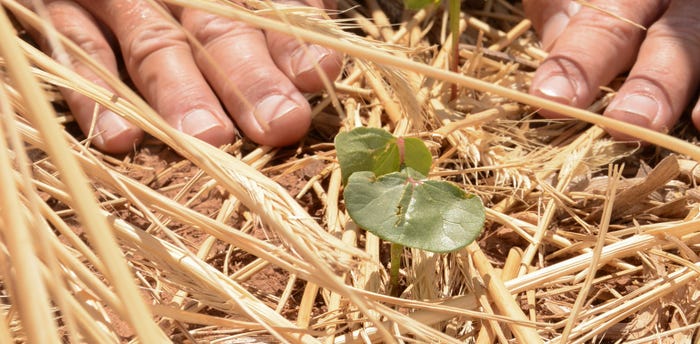
Field stops scheduled for Rolling Plains field day. No-till practices to be discussed.
Parmer County grower Kelly Kettner, has been transitioning his soil management practices from conventional tillage to no-tillage since 2008. He says his interest in no-till began in college but he didn't begin to implement it seriously on his farm until the 2009/2010 season.
This year with the drought coupled with high winds and periodic rain showers, Kettner credits his cover crops for protecting his young cotton plants.
See, Drought conditions elevate value of no-till for Texas grower; emergence slow for South Plains crops
Knee-high rye saved his cotton during a recent hail storm. On one section, Kettner has two pivots next to each other. Both circles have a rye cover crop and both are planted to cotton. One of the circles has “excellent rye residue,” while the other rye field, due to delayed planting and lack of fall moisture, is kind of “light.” The excellent rye was up to Kettner’s knees, while the other, after he sprayed it, melted down, keeping the soil from blowing, but not what he would describe as “full cover.”
“The storm we had the other night had pea to marble-sized-hail, and I didn’t have to replant cotton on the field that had the real tall cover, but I did have to replant cotton on the one that didn’t, and that’s right across the turn-row.” Kettner says cotton survived a similar hail storm in 2003. “One year, I had cotton in some really tall rye stubble. There wasn’t a field of cotton within 10 miles of this field of that made it through the hail storm, but mine made it through and made like 2.5 bales to the acre.”
See, Sand-fighting annoyance turns Texas grower to no-till system
Kettner recommends growers interested in the no-till, cover crop system begin slowly, "to get a feel for it." He says learning from other no-till growers and attending meetings like the No-Till Conference held in Lubbock, Texas, and watching YouTube videos on the subject have helped him gain a better understanding.
About the Author(s)
You May Also Like






